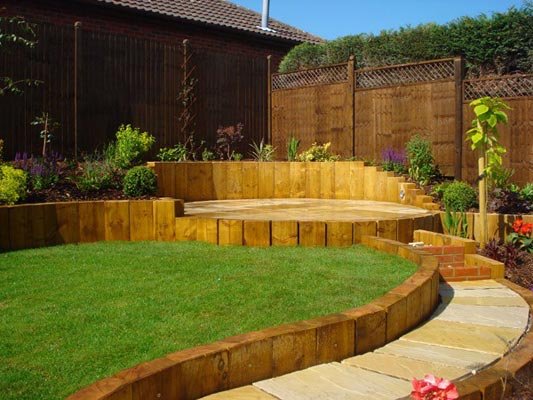
If your garden has a gentle slope, there’s no need for major work.
In the ornamental garden, create curved paths like our English friends do so well. Place your beds perpendicular to the slope in order to tame it and to retain watering.
Choose plants with fleshy roots and rhizomes that retain the soil much better. Create a system of gutters starting at the top and going around your crops to protect them from runoff.
Similarly, if you want to create a vegetable garden, install plessis always perpendicular to the slope to retain the soil. You will then be able to grow your vegetables in these squares, at ground level.
A garden on a steeper slope
The steeper the slope, the greater the phenomenon of gullying due to runoff. Crevices and holes appear, preventing the fertilizing elements from staying in place and making watering impossible. This type of land must be developed to make cultivation possible. It will then be necessary to be inspired by our ancestors who practiced the method of terraces, thus creating levels of culture, where the retained and heated ground could be cultivated without concern.
Another important interest is the aesthetic aspect. A terraced garden always has a particular cachet if the plants are well arranged. The highest ones at the back of the setting and the lowest ones at the front to create a nice perspective.
How do I create terraces in my garden?
Terraces must be laid out perpendicular to the slope to be effective. The choice of materials varies according to the desired effect and also according to the budget. Note, however, that a stone retaining wall will be much more durable than the wooden version, so you won’t have to redo the work every five years, but it’s all a matter of personal choice. If your preference is for planking or logs, which are very aesthetic and perfect for retaining a gentle slope, choose a rot-proof wood such as black locust for example.
To build your first terrace, start at the top of the slope and spread the earth taken from the top of the slope over the bottom of the future terrace. The retaining wall will then be created at the foot of the first terrace. Continue down the slope, creating successive terraces that do not have to be the same size. This will allow you to vary the pleasures and break the visual monotony.
Plan the watering
An automatic watering system will be perfect to irrigate your garden gently, while saving both water and your health, because it is better to avoid the back and forth movement of a full watering can on a sloping ground!
Access
To access your terraced garden you will need to create paths: gently sloping stairs, winding paths, the choice will be made according to the slope but you will also need to think about the practical side by creating access areas for the transport of your wheelbarrow.

